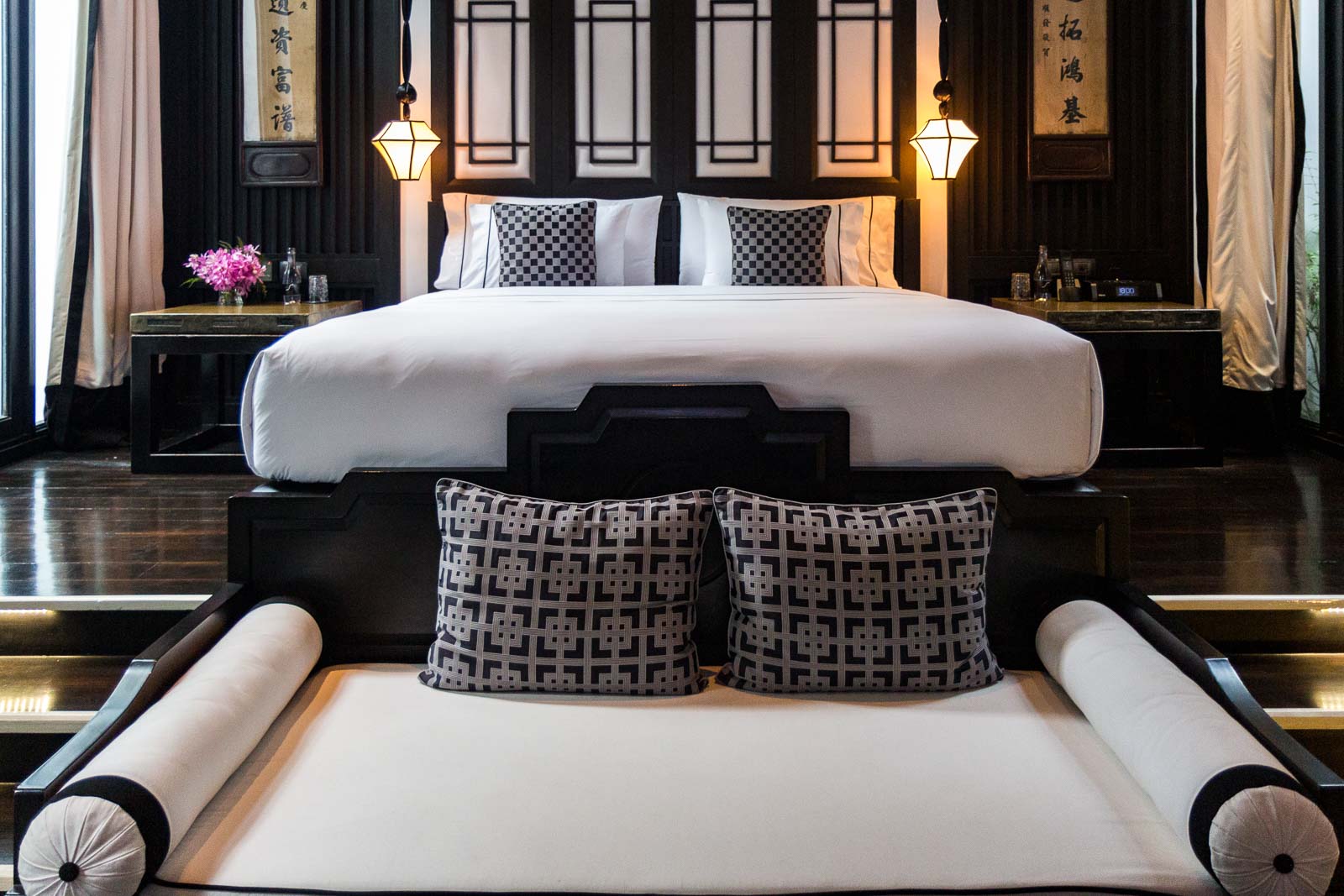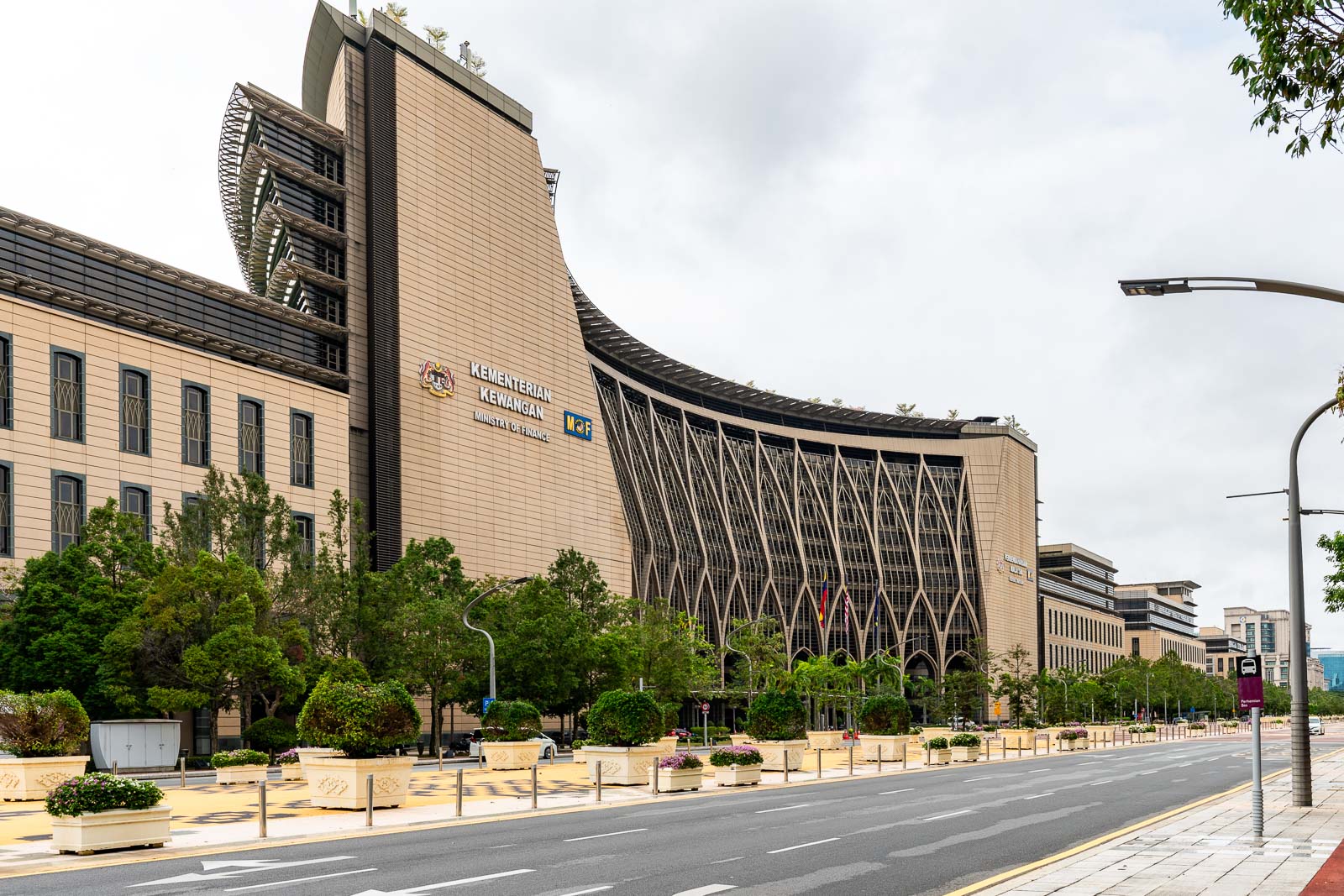Visiting the border with North Korea is a fascinating experience, so here's what you need to know about the demilitarised zone. The post A DMZ tour from Seoul appeared first on Time Travel Turtle.
These days, it seems so ludicrous that you would just split a country apart Ė especially along a fairly arbitrary line like the 38th parallelÖ but thatís exactly what they did to Korea at the end of the Second World War.
To try to deal with the remaining tensions between the major powers at the end of the war, the US and the Soviet Union agreed to temporarily divide the Korean Peninsula in a straight east-west line while they worked out what to do.
As we now know, though, they couldnít work out what to do. This irrational hard border led to the Korean War. It led to the creation of two new countries Ė South Korea and North Korea. And led to the DMZ, or Korean Demilitarised Zone.
As an introductory video proclaims on my tour to the demilitarised zone, ďthe DMZ has remained a scar of the warĒ.
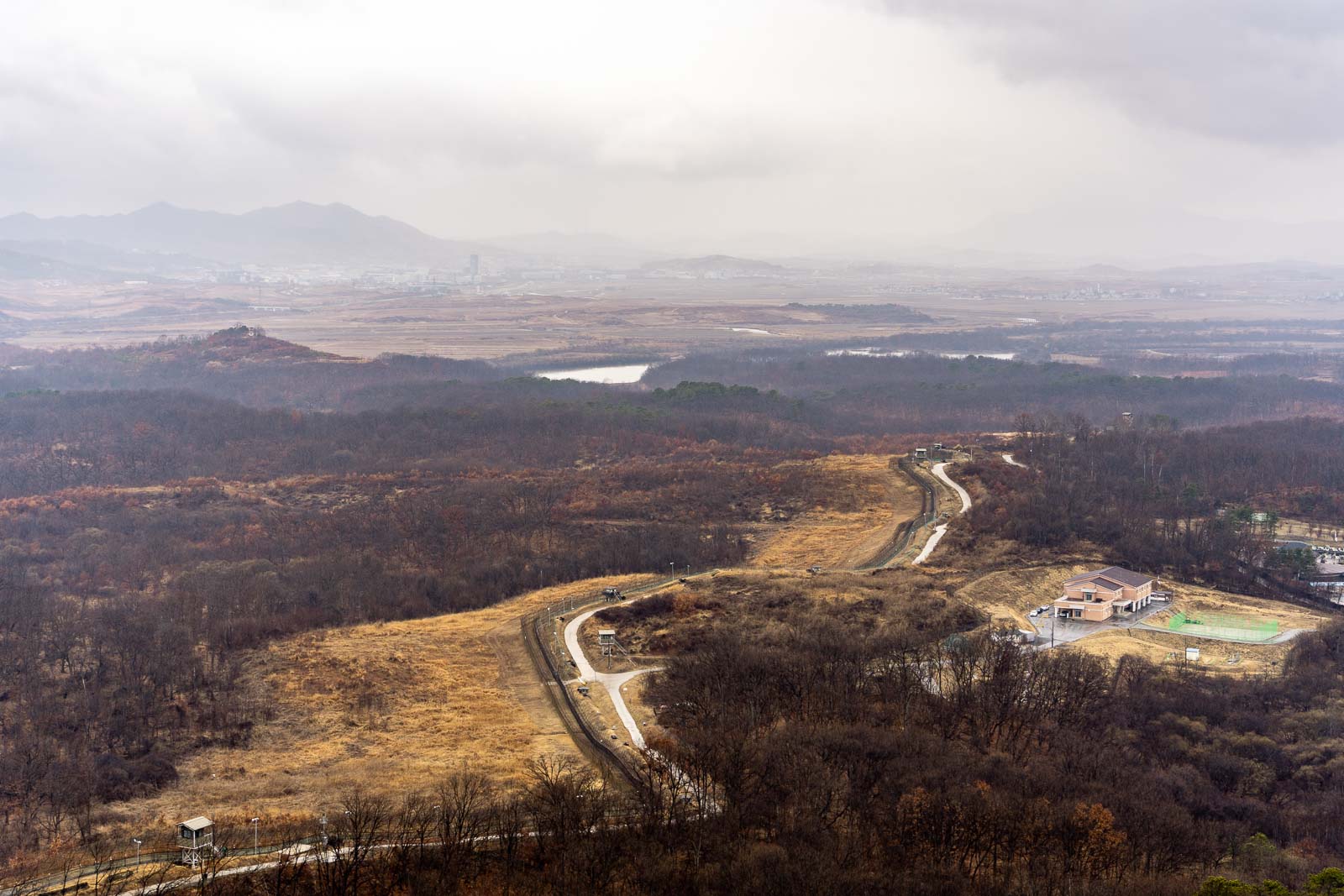
In the immediate aftermath of this division, many families were separated, jobs were lost, lives were upended.
Just think about what would change for you if suddenly you werenít allowed into the other half of your country, your state, or your city.
Nowadays, we think of North Korea and South Korea as separate countries, with completely different cultures (and, of course, political systems). But one of the things that visiting the DMZ does is remind you that they were unified for centuries until this artificial border was drawn across the country.
To see the DMZ, I recommend this guided tour from Seoul, which includes all the main sights.
Visiting the DMZ is one of the most popular things to do in Seoul, and I think itís worth the day trip. What youíll see on a DMZ tour is unique and, of course, youíll even be able to peer over all the fortifications into North Korea.
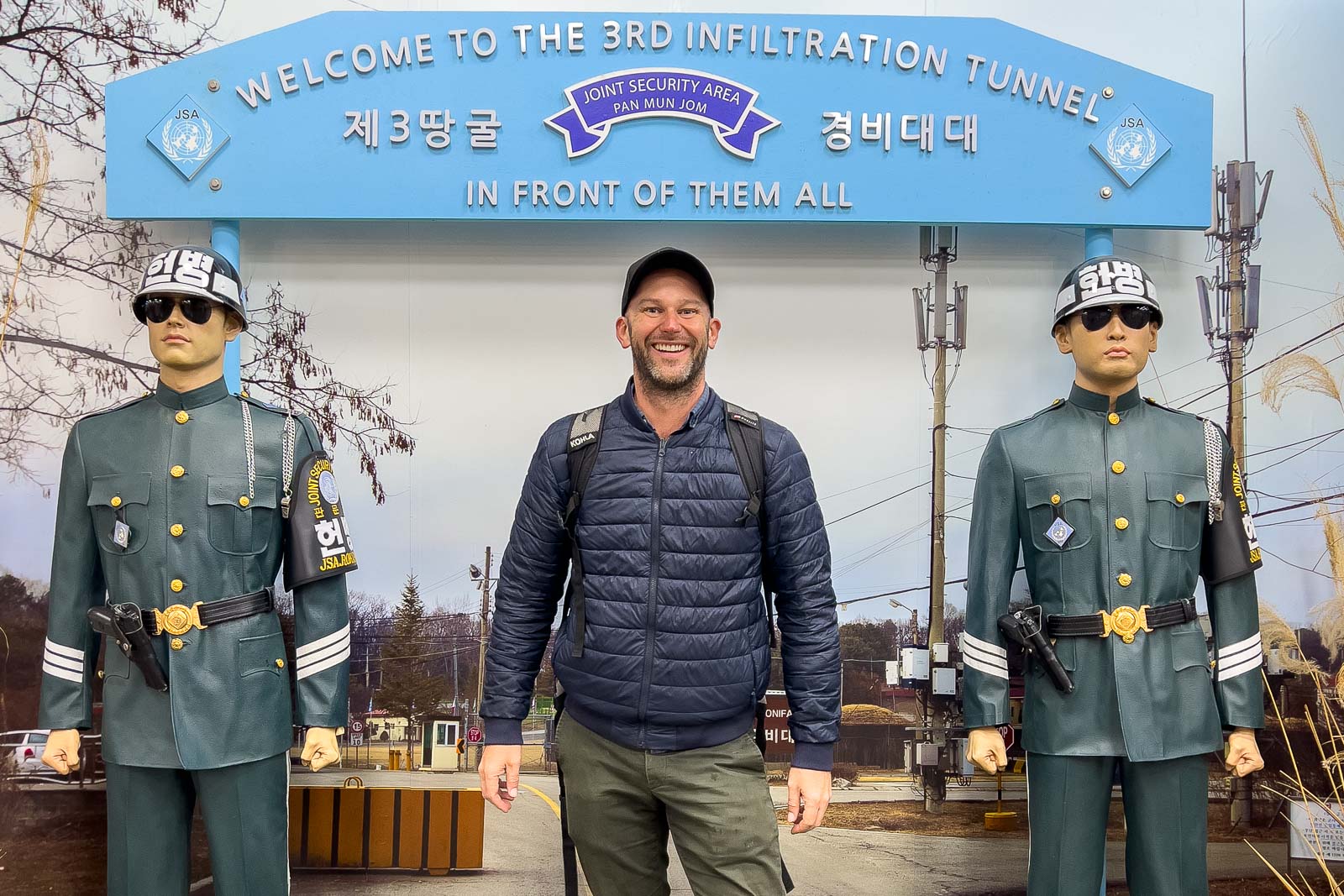
Perhaps itís just a bit of fun for some people Ė and certainly the small theme park here on the southern side suggests that even some locals see it that way.
Or perhaps, for many foreigners, thereís something adventurous about going to the front lines of a war that has not technically ended.
But the issues are really complicated around the Korean War, the separation of the peninsula, and any potential resolution. You wonít solve them yourself on a day trip to the DMZ from SeoulÖ but it does offer a good chance to give them some consideration.

As our guide Jenny ruminates towards the end of the DMZ tour when asked about whether there will be a reunification of the Koreas: ďHonestly I donít know, it will be very difficult. But what I do know Ė we need peaceĒ.
If you take a guided tour, youíll learn a lot about the history of the DMZ and gain an insight into what South Koreans think about it. (Hint: thereís not a unified opinion on reunification).
But I also think itís worth doing a bit of research beforehand, because the experience is not always what people expect.
For instance, here are a few key things to know about a DMZ tour from Seoul:
A DMZ tour wonít actually take you into the official DMZ. The actual Korean Demilitarised Zone is about four kilometres wide and is largely empty (and guarded). What youíll go to is the Civilian Control Zone, which is a secure buffer area to the south. Regardless of which tour you take or if you arrive independently, youíll have to transfer to one of the official tour buses that have a few set stops. Yes, you will be able to see North Korea Ė but from a distance. It may be the closest youíll ever come to the isolationist country, but youíll still be getting most details through binoculars. Also, one of the famous images you may have of the buildings that literally straddle the border Ė well, thatís not on most DMZ tours. Itís called the Joint Security Area (JSA) and itís in a different part of the border to the main tours.This photo of mine of the Joint Security Area (JSA) is actually from when I visited it from the North Korean side years ago.

There are some tours that visit the JSA, but they are not always available. Iíll talk about more about the logistics of that soon.
What is the DMZ?
The Korean Demilitarised Zone (DMZ) is the area around the border between North Korea and South Korea. It stretches out for about two kilometres in each direction from the border, which is known as the Military Demarcation Line.
It is one of the most heavily guarded places on the planet but is mostly empty, with very little development inside.
Can tourists go to the DMZ?
Tours to the DMZ from Seoul are very popular and are easy to join Ė but most people wonít actually go to the DMZ, which is generally off-limits. Instead, the tours go to an area called the Civilian Control Zone, from where you can look into the DMZ (and into North Korea).
There are sometimes tours to a different part of the border called the Joint Security Area (JSA) which is within the DMZ. So, if a tour there is running (they often stop for indefinite periods for security reasons) then tourists can visit the DMZ.
Is it worth visiting the DMZ?
Visiting the DMZ from Seoul is a really interesting day trip and a good way to learn about some of the history of the Korean War and the division of the Korean Peninsula.
There are quite a few things to see around the DMZ that make the visit worthwhile. But keep in mind that most tours donít physically go into the DMZ, just the zone bordering it, so make sure you have realistic expectations.
There are quite a few ways you can get there, and Iíll run through some of the best DMZ tours later in this article.
HOT TIP: Youíll almost certainly save money if you use the GoCity Seoul Pass to take a DMZ tour from Seoul!
First, though, I wanted to have a look at what it actually is and what youíll discover when you visit the DMZ during your trip to South Korea.
History of the DMZ
The DMZ (officially called the Korean Demilitarised Zone) has been there for the entirety of many of our lifetimes Ė but in the broader history of Korea, it is very new.
The story of the DMZ starts at the end of World War II when the defeated Japanese left the Korean Peninsula theyíd be controlling, and a decision had to be made about what to do with it.
The Ďsolutioní at the time (in 1945) was a compromise between the US and the Soviet Union to temporarily split it in two along a straight line tracing the 38th parallel.

The problem was they couldnít agree what to do next, and in 1948 the two new countries of South Korea and North Korea were established and both claimed they should have the whole peninsula.
This led to the North invading in 1950 and the start of the Korean War, which raged until 1953 when there was an armistice agreement (although, technically, no official end to the war).
As part of the Korean Armistice Agreement, a new border between the two countries was determined, 248 kilometres long, following geographical contours (so not a straight line), and intersecting the 38th parallel in a southwest-northeast direction.
This border is called the Military Demarcation Line.
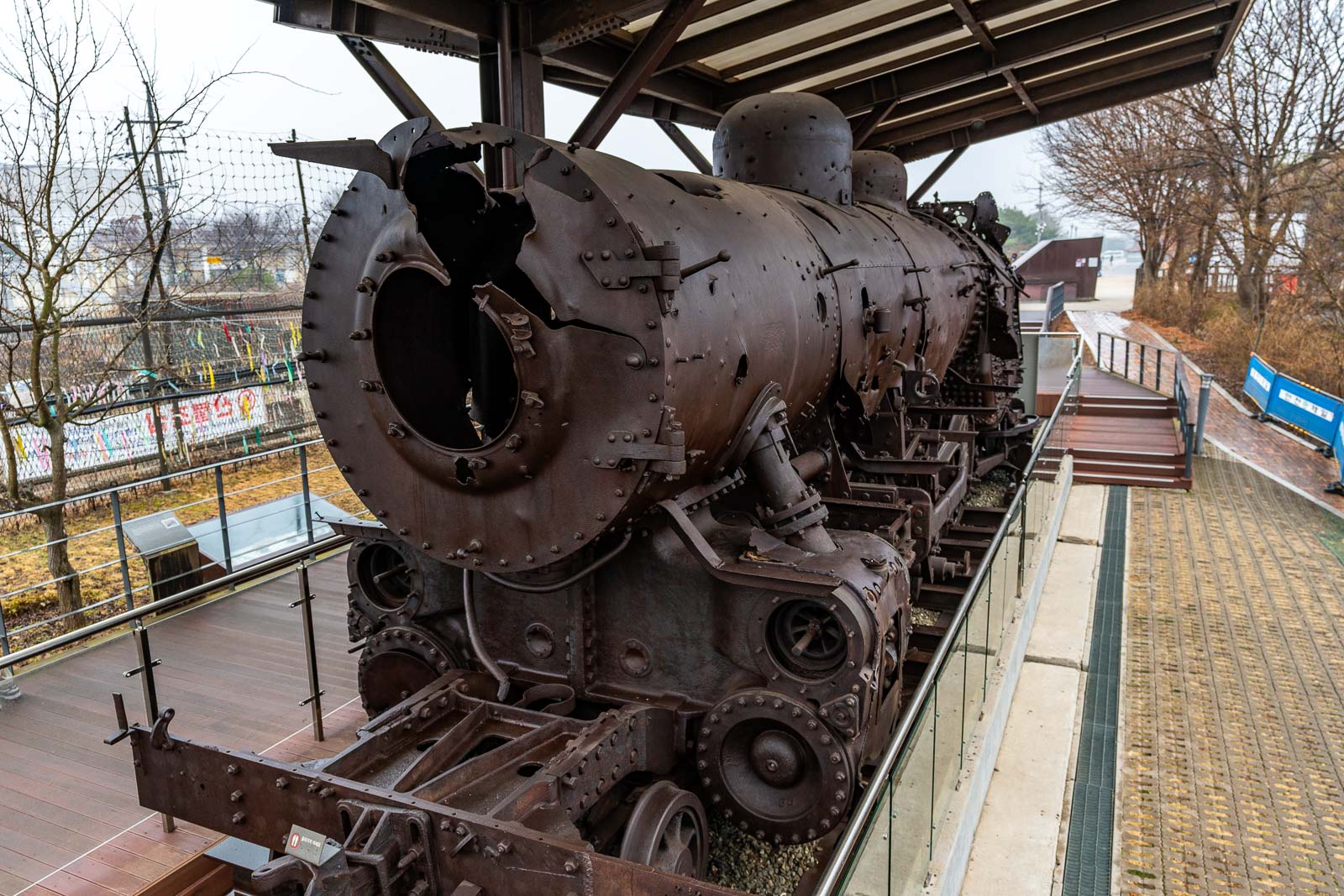
On either side of this line a buffer area was declared, about two kilometres in each direction. And itís this four-kilometre-wide stretch of land the entire way along the border that is the DMZ.
Thereís something ironic about the name Ė the Korean Demilitarised Zone is actually one of the most militarised places on earth. Itís just that these fortifications are on the edge of the zone, not in it.
The DMZ is actually relatively empty, other than a few small settlements and official buildings. Itís so undeveloped that is actually has a reputation for becoming a bit of a nature reserve, particularly for deer, bears, and birds
Things to see at the DMZ
Whether you visit the DMZ independently or come on a DMZ tour from Seoul, youíll be able to see the same things Ė because ultimately everybody ends up on one of the same official buses to head into the controlled area.
Thereís actually a fairly limited range of things that youíll be able to see, but they each show a different side to the history and current situation along the border.
Imjingak
Your visit will almost certainly begin at Imjingak, which is on the edge of the Civilian Control Line.
Everything you pass through to get here is just normal South Korea. Everything beyond is in the heavily guarded Civilian Control Zone, which is the buffer area before the actual edge of the DMZ.
Imjingak is a funny place because itís been developed as a bit of a tourist resort, and thereís the odd sight of a small theme park called Pyeonghwa Land right next to the sombre National Memorial Hall of the Korean War Abductees.
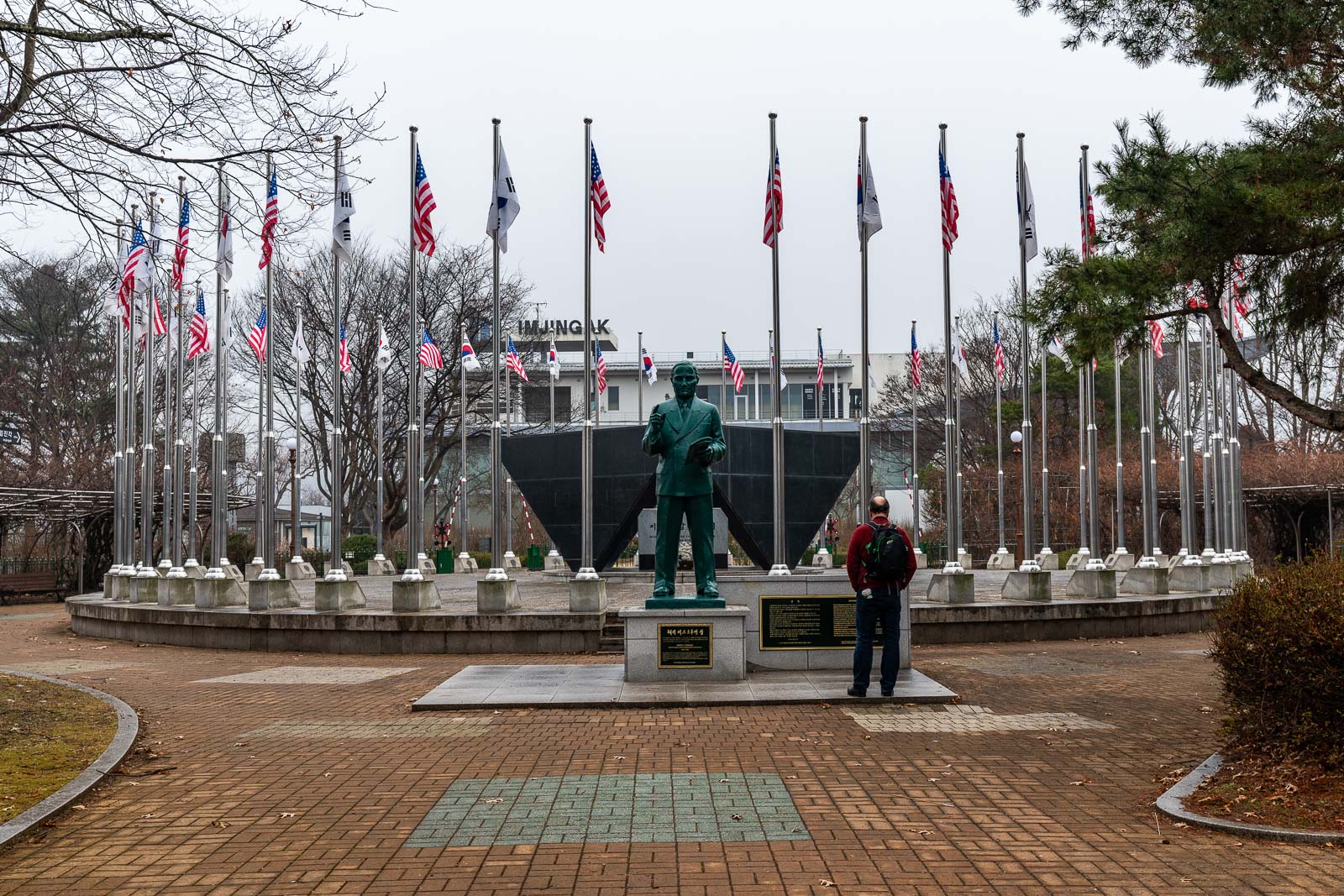
Regardless of how you arrive, youíll probably have to spend some time in Imjingak while you wait for the official tour bus to take you further. Which is fine, because there are quite a few things to see at Imjingak (if you do jump on a bus quickly, come back and have a look around).
The most interesting area is around the Freedom Bridge, which was built in 1953 as part of the Korean Armistice Agreement and used to exchange prisoners at the end of the Korean War.
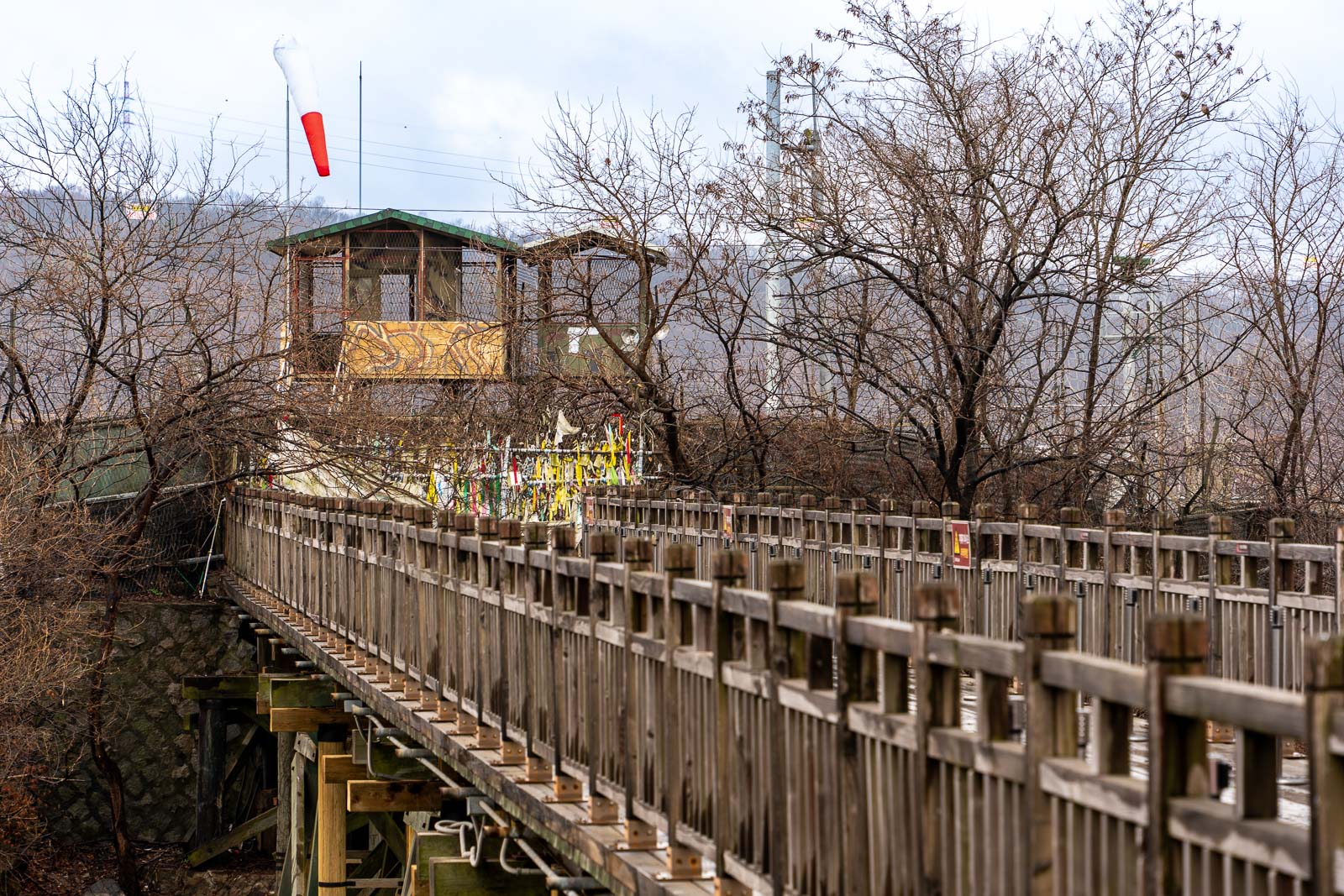
This is where youíll also see the Peace Train, which is the locomotive from the last train to cross the border before the war, in 1950.
There are also quite a few memorials here, dedicated to different groups who fought in the Korean War, as well as the Peace Bell, which is rung at midday each day to pray for peace.
Imjingak is also where you can catch the Paju Imjingak Peace Gondola (more commonly known as the DMZ Gondola). Itís not really worth it if youíre doing a proper tour, but itís an easy way to go into the Civilian Control Zone to visit the former American installation of Camp Greaves (plus get a view across the area).
Camp Greaves
I just want to make a quick mention here of Camp Greaves, because itís not actually somewhere that most people will visit as itís not considered important enough for the majority of tours.
As I just said, itís reached via the DMZ Gondola from Imjingak and usually doesnít have the same queue as the main tours (plus it can be done in less time). So itís an option for people who donít have time for a proper visit.
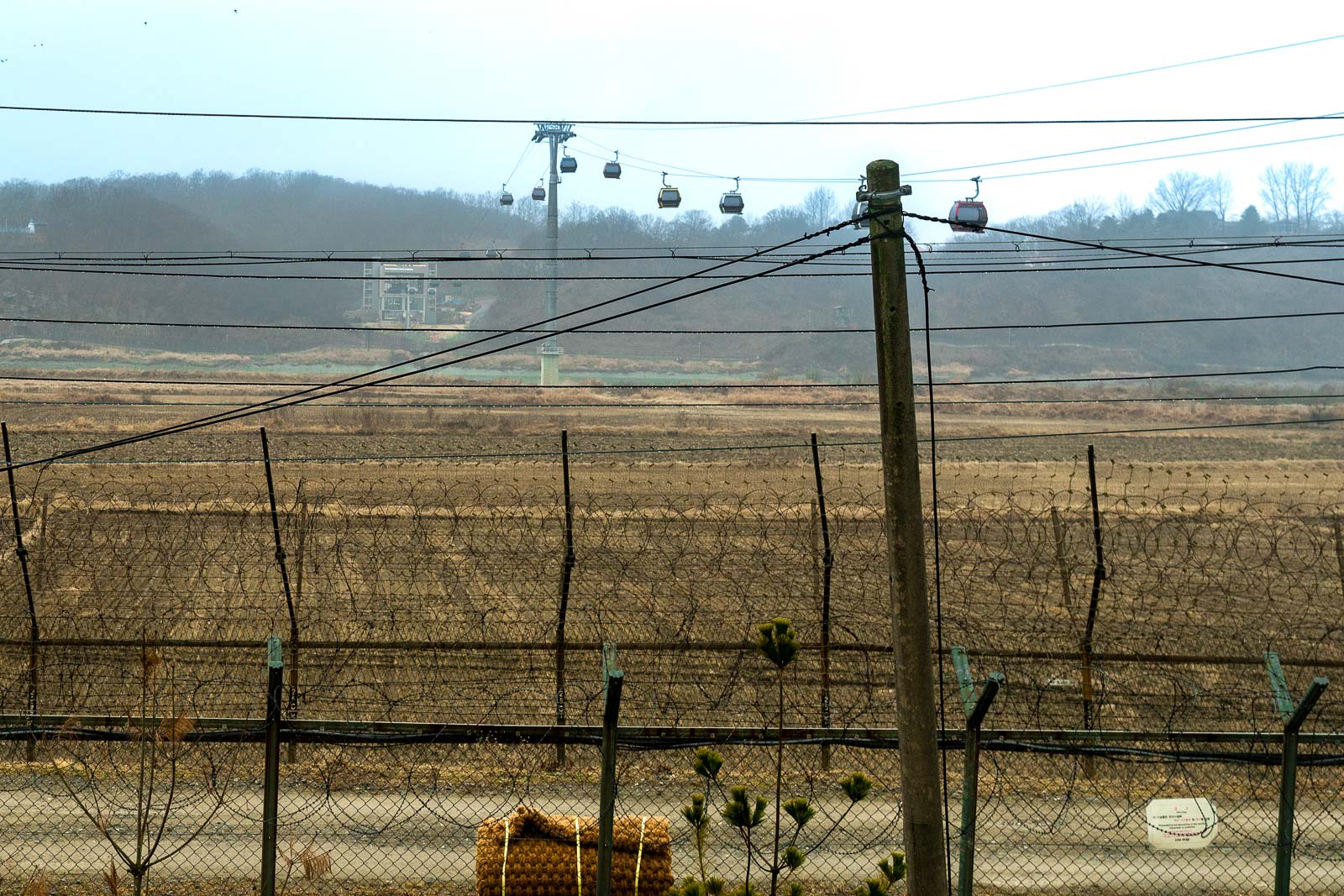
Camp Greaves was a US military facility for about 50 years after the end of the Korean War, with the land only given back to the South Korean government in 2007.
Now, the various buildings (including ammunition bunkers) have been turned into a gallery/museum with art exhibitions and displays related to the war Ė including photos and memorabilia from the facility itself.
Itís actually quite interesting and may be worth adding to your day if youíre visiting the DMZ independently.
Dora Observatory
Beyond Imjingak, past the border check at the Civilian Control Line (which happens on the northern side of the Unification Bridge), youíll be in the Civilian Control Zone, the area that borders the actual DMZ.
One of the main attractions is the Dora Observatory, a viewing complex at the top of Mount Dora.

The modern building has a couple of lower levels with a basic information display and a theatrette. But the main attraction is the rooftop, where the observatory platform is.
From here, you can look right across the empty demilitarised zone and into North Korea.
Some of the things youíll be able to spot nearby are the town of Kijong-dong, known as the ĎPropaganda Villageí; the large city of Kaesong, which has a population of about 200,000 people; and enormous flagpoles on either side of the border that kept being built higher to try to show superiority.
The viewing platform area is equipped with a long line of binoculars that are free to use. This lets you get a better view of some of the buildings and settlements on the North Korean side.
Third Infiltration Tunnel
As I start to head down the path to the Third Infiltration Tunnel, our guide calls after me, ďPlease come back to South Korea!Ē.
Sheís joking, but itís a fun reminder of what Iím about to see.
This is one of the tunnels that the North Koreans supposedly dug under the DMZ to try to reach South Korea (I say Ďsupposedlyí because the North has denied that it is theirsÖ and our guide suspiciously spends a lot of more time than necessary explaining why the South couldnít possibly have done it themselves!).
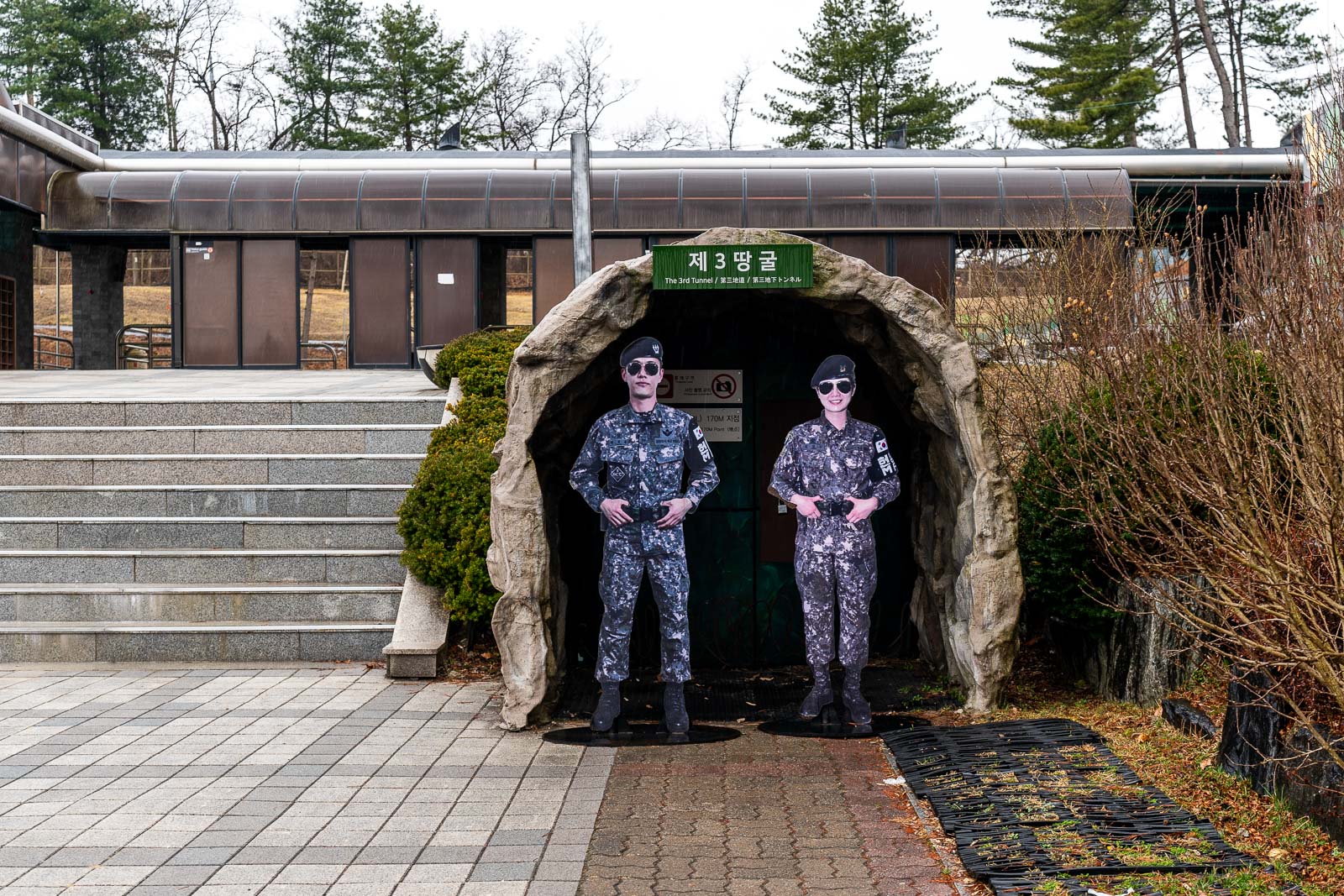
Assuming the official story is correct, the tunnel was still being dug in 1978 when it was discovered by the South about 73 metre below the surface Ė but by this time the North had dug more than 1.6 kilometres, including 435 metres into South Korean territory.
The plan was probably for a surprise attack on Seoul, and itís estimated that about 30,000 soldiers could come through each hour.
Now, there are three concrete blockades around the actual Military Demarcation Line to stop anyone getting through Ė including tourists like me. But this is still the closest most people will get to North Korea (and, technically, you will be in the DMZ).
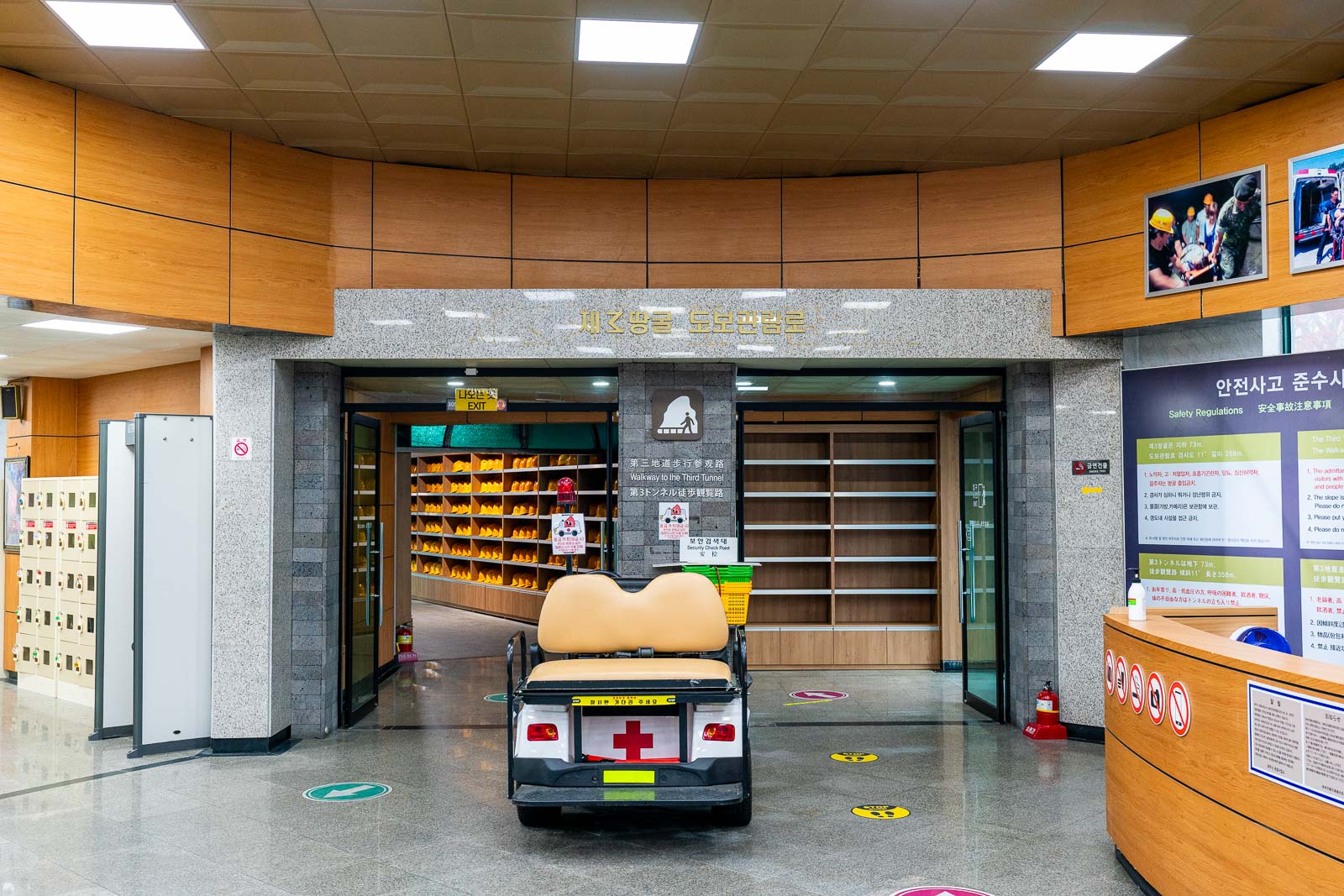
Getting down to the tunnel is a steep walk 75 metres underground, then youíll go through the tunnel for about 265 metres before turning around and coming back.
Itís low and narrow and I have to hunch over the whole time, but itís definitely a highlight of a visit to the DMZ.
Unification Village
The other stop on the official DMZ tour is the Unification Village, called Tongil-Chon in Korean.
Only about 500 people live here, in one of the few settlements within the Civilian Control Zone. And, other than the fact itís in an unusual place, thereís not really much thatís exciting to see here.
The main reason the tours stop here is for the large shop that sells souvenirs related to the DMZ, as well as food and drink that has been grown here.

Personally, I was a bit bored at this stop Ė but Iím not a big shopper. I guess itís nice to be able to buy something unique, which is what is on offer here.
Joint Security Area (JSA)
The final thing to see in the DMZ that I want to talk about is the Joint Security Area, known as the JSA.
This is not part of the normal DMZ tours. Itís located about five kilometres further along the border from the Dora Observatory, and is about 10 kilometres drive in a different direction from Imjingak.
The JSA is the most interesting thing you can see here, though, because itís actually in the DMZ. In fact, this facility straddles the border, half of it in South Korea and half of it in North Korea!
I visited it from the northern side when I did a tour in North Korea. From Seoul, there are some special tours that will take you there, but numbers are limited.
The other thing to note is that the JSA is often closed, and tours can be suddenly cancelled (sometimes indefinitely) because of security issues.
For instance, when a US soldier defected across the border on a tour in July 2023, the JSA tours were stopped and havenít restarted again yet!
Best DMZ tours
It is possible to visit the DMZ independently from Seoul, and Iíll discuss that in the next section. But because public transportation is difficult and youíll end up on the same official bus anyway, I would recommend taking a tour to make the most of your time in South Korea.
There are quite a few companies that can take you there, each offering fairly similar sights. The difference with the best tours to the DMZ is that they have good guides who can really give you the context of what youíre seeing.
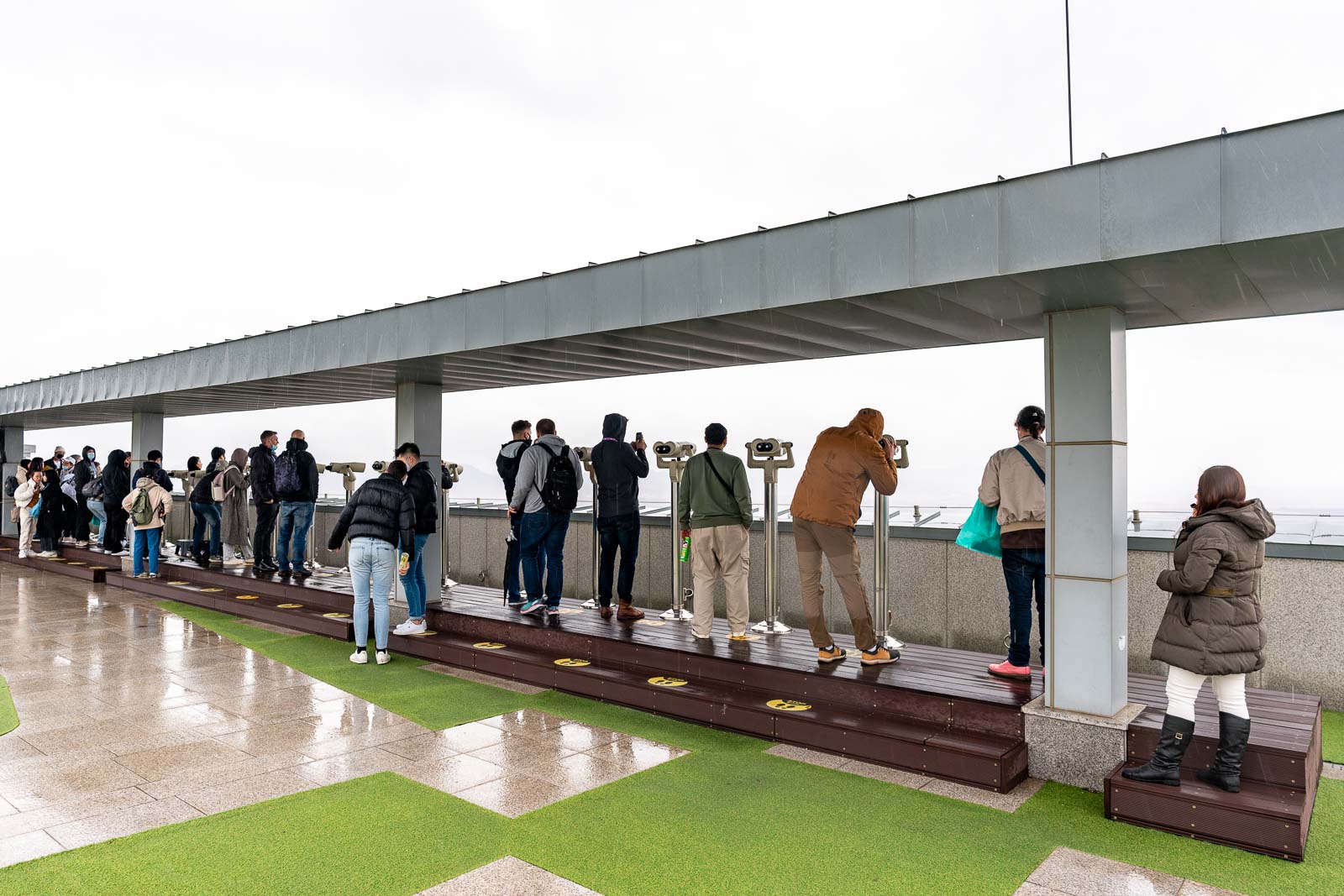
There are also some slight differences with what the tours are able to add to the trip beyond the standard entry into the Civilian Control Zone. Some will add the gondola, for example, or a scenic suspension bridge nearby.
For the best standard tour to the DMZ, I recommend this one, which has a reputation for the best guides.
But any of these other tours from Seoul are also very good:
Another thing to think about is the GoCity Seoul Pass (either Explorer or All-Inclusive). Itís a pass where you get multiple entries or experiences for a set price Ė and it includes a DMZ tour from Seoul. In fact, the DMZ tour is one of the most expensive inclusions, so youíre pretty much guaranteed to save money!
A couple of things to keep in mind:
Youíll need to have your passport with you. This is very important because it will be checked. Donít forget to bring it! The DMZ sights are closed on Monday so no tours run that day. The tours can be suddenly cancelled at the last moment if there are security issues (it happened the week that I went out there because of a North Korean missile test). And most tours start very early in the morning from Seoul because the companies canít reserve tickets and need you to be there to get them personally.All in all, though, its pretty straightforward and easy to visit the DMZ on a tour, so once you have booked something, you can just relax.
Visiting the DMZ independently
If youíre keen to visit the DMZ without taking a tour, itís definitely possible and there are a couple of options.
The first thing to know is that the closest youíll be able to get independently to the places Iíve talked about is Imjingak. You wonít be able to go beyond the Civilian Control Line without one of the official options.
If youíve got a car, then the first step is easy Ė you can just drive to Imjingak.
If youíre using public transport, there is a station at Imingak, called Imjingang station. But it hasnít been open for a while.
Still, you should be able to take the train from Seoul to Munsan station and then transfer to a bus that is replacing the usual rail line.
Just check in advance, because this route has been a bit unreliable lately. If all is ok, it should take about 2 hours and cost 2400 won (US$1.80) each way.

Once you arrive at Imingak, youíll be able to see all the sights in the area for free, including the Freedom Bridge and the memorials.
From here, you can take easily take the DMZ Gondola into the Civilian Control Zone to Camp Greaves. It costs 11,000 won (US$8.20) for a standard ticket, 9,000 won (US$6.70) for a child, and 8,000 won (US$6) for a senior.
To go on the official tour to see the other sights (such as Dora Observatory and the Third Infiltration Tunnel), you can buy a ticket from the visitor centre at Imingak.
The tour costs 11,700 won (US$8.75) for a standard ticket, 9200 won (US$6.90) for a child, and 7400 won (US$5.50) for a senior.
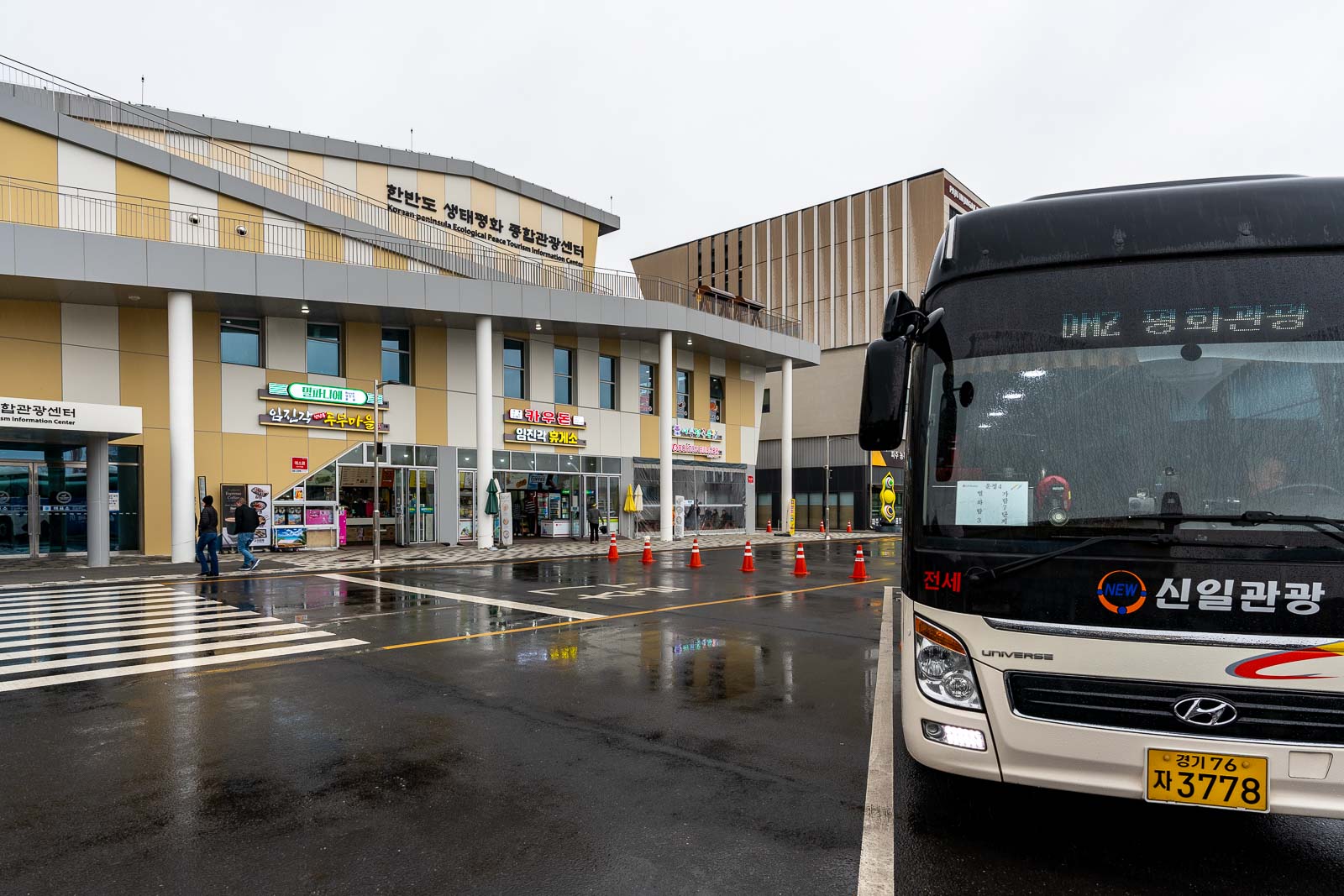
The tricky thing here is that tickets are sold on a first-come first-serve basis, and the tour buses get here before ticket sales start at 9 oíclock. So if you donít get in the line early enough, you may find you have to then wait a long time until itís your turn to take the bus tour (or even miss out entirely in busy periods).
So to get to the ticket line early, youíll have to get a really early train/bus combo from Seoul. This is ultimately why I would usually recommend taking a tour, even though itís going to end up costing you more.
A final thing to note here, you wonít be able to visit the JSA independently because of its location right on the Military Demarcation Line. If you want to see the Joint Security Area, youíll need to take a tour.
But with all that said, I hope youíre able to make the most of your visit to the DMZ and come away with a new understanding of the conflict that it emerged from, and what itís done to the families since.
The stories from my guide were quite emotional, a reminder that many families have had their stories changed so dramatically because of an arbitrary line across a country.
The post A DMZ tour from Seoul appeared first on Time Travel Turtle.







